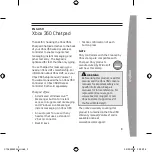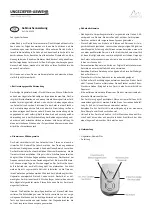
CHAPTER 3: INSTALLATION
PILOT CHANNEL COMMUNICATIONS
L90 LINE CURRENT DIFFERENTIAL SYSTEM – INSTRUCTION MANUAL
3-43
3
Figure 3-46: G.703 and fiber interface connection
3.4.8 IEEE C37.94 interface
The UR-series IEEE C37.94 communication modules (module types 2I, 2J, 76, and 77) are designed to interface with IEEE
C37.94 compliant digital multiplexers or an IEEE C37.94 compliant interface converter for use with direct input and output
applications. The IEEE C37.94 standard defines a point-to-point optical link for synchronous data between a multiplexer
and a teleprotection device. This data is typically 64 kbps, but the standard provides for speeds up to 64
n
kbps, where n =
1, 2,…, 12. The UR-series C37.94 communication modules are either 64 kbps (with n fixed at 1) for 128 kbps (with n fixed at
2). The frame is a valid International Telecommunications Union (ITU-T) recommended G.704 pattern from the standpoint
of framing and data rate. The frame is 256 bits and is repeated at a frame rate of 8000 Hz, with a resultant bit rate of 2048
kbps.
The specifications for the module are as follows:
•
IEEE standard — C37.94 for 2
×
64 kbps optical fiber interface (for 76 and 77 modules)
•
Fiber optic cable type — 50 nm or 62.5
μ
m core diameter optical fiber
•
Fiber optic mode — multimode
•
Fiber optic cable length — up to 2 km
•
Fiber optic connector — type ST
•
Wavelength — 820 ±40 nm
•
Connection — as per all fiber optic connections, a Tx to Rx connection is required
The UR-series C37.94 communication module can be connected directly to any compliant digital multiplexer that supports
the IEEE C37.94 standard. The figure shows the concept.
Figure 3-47: IEEE C37.94 connection to compliant digital multiplexer
The UR-series C37.94 communication module can be connected to the electrical interface (G.703, RS422, or X.21) of a non-
compliant digital multiplexer via an optical-to-electrical interface converter that supports the IEEE C37.94 standard. The
following figure shows the concept.
















































